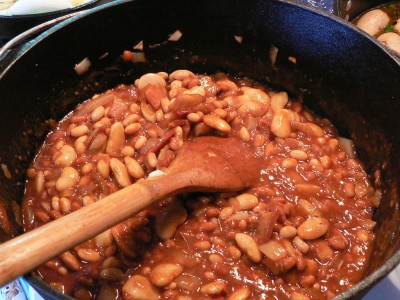What’s in Your Lunch Box? Part 2 — Prohibition and the Great Depression
/https://tf-cmsv2-smithsonianmag-media.s3.amazonaws.com/filer/20110520090041fruit-cocktail-400x267.jpg)
From ‘cocktails’ to baked beans Lunches have always varied depending on individual taste, family tradition and economic factors, says Lynne Olver, creator of the Food Timeline. The menus in this five-part series about lunches are meant to capture the spirit and culinary creations of their eras. Notice the stark contrast between the 1920s and 1930s.
1920s
The Times: The Roaring Twenties were in full swing — accompanied by jazz music — as Americans recovered from WWI. The 1920s saw the Harlem Renaissance and the Lost Generation in Paris. Prohibition had the most influence on what Americans did (or didn’t) consume.
Lunch: Egg salad sandwich Celery Fruit cocktail Milk
Why it was popular: During Prohibition, which began in 1920 and outlawed the sale of alcohol, anything that was named after an alcoholic drink was popular. Fruit and shrimp cocktails were usually served in traditional cocktail glasses — restaurants weren’t permitted to use those glasses for their original purpose.
1930s
The Times: The Great Depression gripped the country for most of the decade. Americans elected President Franklin D. Roosevelt, who immediately began pushing through his New Deal. Amelia Earhart became the first woman to fly solo across the Atlantic Ocean and Jesse Owens won four gold medals at the 1936 Berlin Olympics.
Lunch: Baked beans on white bread Coffee
Why it was popular: The baked bean sandwich was packed with protein and very economical. During the Great Depression, local food pantries often distributed free portions of bread, soup and baked beans. The first U.S. food stamp program, which allowed citizens to buy surplus foods at a discount, began in 1939 and lasted until 1943, when many people returned to work during WWII. Farmers who lost their property and source of food to the Dust Bowl were among the most likely to go hungry; one third of the population at the center of this natural disaster fled, usually to California.
More lunch box blog posts coming soon!
